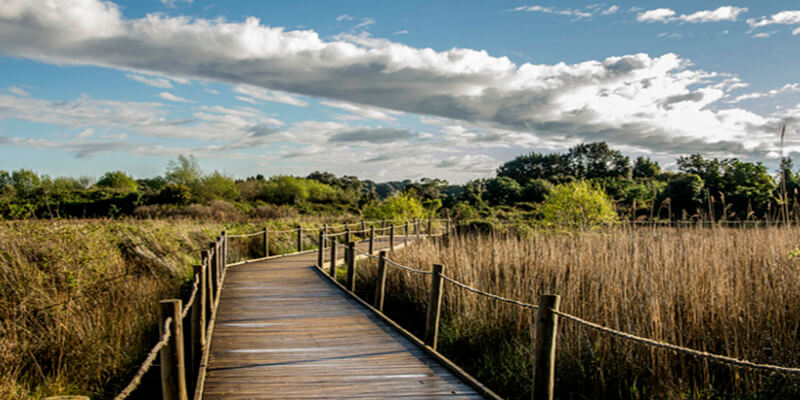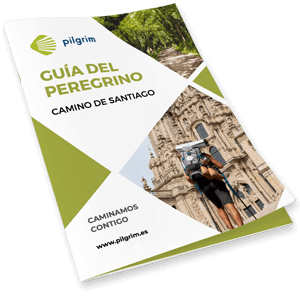Laredo
‹ Back to the stage
Laredo
- Residents: 11.800 aprox.
- Province: Cantabria
Information
Get to know Laredo
Laredo is a small fishing village in Cantabria, as a whole forms the main point of tourist interest, every street, every corner is the scene of all the historical events that have been shaping Laredo.
The oldest and most historic area of the town is known as Puebla Vieja de Laredo, this place is formed by six streets full of monuments and the Arrabal.
Location
How to get there
Accessing Laredo is very easy thanks to the AP-8 freeway. At the height of El Callejo, approximately, you must leave this road to join the regional road E-70 towards Laredo.
By bus it is possible to reach the town from Bilbao, Irun, Santander, A Coruña, Madrid, among others.
By bus it is possible to reach the town from Bilbao, Irun, Santander, A Coruña, Madrid, among others.
History / Culture
What to see
Capilla del Espíritu Santo
The Chapel of the Holy Spirit sits on the neighborhood of the same name in the town of Laredo, next to the old Hospital of the town.
As can be seen on the outside, its construction has large amounts of baroque elements as it was ordered to be built in the fifteenth century by Don Garcia Gonzalez de Escalante and his wife. Of its primitive work the circular apse is conserved, in whose interior it counts on a mural in which a sacred scene is represented. Another of the elements to emphasize are the set of small corbels located under the roof formed by different reliefs.

Convento de San Francisco
The Convent of San Francisco is located within the walls of the city of Laredo since 1568. This temple is considered one of the most important classicist style buildings throughout Cantabria.
Although it was originally founded by the Franciscan Order, today and since 1883 it is inhabited by the Order of the Trinitarian Mothers, who use some of its rooms as a Museum of Sacred Art.
As for its structure, highlights inside the altarpiece of pre-Churrigueresque style that shelters in its central street the carving of San Francisco. Around it do not go unnoticed the numerous chapels made by the noble families of the town: the Marroquines, the Alvarado, the Salazar, etc.
.

Edificio del Mercado
The Laredo Market building was built in 1900 with a modernist style and eclectic influences in its interior, since the decoration is based on ceramic carvings of animal busts and various representations of food.
Currently the building is used as a food market in which fish, meat, fruit and vegetables are sold.

Palacio de las cuatro témporas
The Palace of the Four Temples was built around the nineteenth century by the rancher Don Ramon de Carassa and is now considered one of the most representative of the popular architecture of the nineteenth century in Cantabria.
This monument is so named because of the four allegorical sculptures symbolizing the four seasons that preside over the main facade of the palace.

Parque Natural de las Marismas de Santoña
The Natural Park of the Marshes of Santoña, Victoria and Joyel is an environment that covers a natural area of more than 4,000 hectares and is considered one of the most important enclaves in Spain, since it has a great ecological value and more than 20,000 birds of 120 different species, small mammals and a peculiar flora.
Spring and autumn are the seasons of migratory birds, so visitors can see a large number of seabirds at this time. Among the birds that can be admired in the marshes are the following: loons, cormorants, herons, spoonbills, geese, ducks, waders, gulls, etc.

Playa Aila
Located in Laredo, Aila is a small cove that stretches for only 50 meters and its occupancy level is low. This sandy beach is composed mostly of rocks and golden sand and has a large swell.

Playa El Regatón
El Regatón beach is located inside the Natural Park of the Marshes of Santoña, Victoria and Joyel, in the vicinity of the Tetro estuary. It covers an area of approximately 2,300 meters and this sandy beach is mainly made up of fine sand. Like La Salvé beach, this sandy area also has a large dune system that has an enormous ecological and scenic value.
Because it is located within a protected area, this sandy area has hardly any facilities and services, except for the usual cleaning services.
<p
Playa La Salvé
The beach of La Salvé, located in Laredo, is one of the busiest in the summer season and has an area of 4,250 meters. The beach is shell-shaped and is one of the safest for bathing in Spain.
This beach is located between the fishing port and marina and the promenade and stands out for having one of the largest dune systems in Cantabria. In addition, this sandy area of La Salvé has been certified with the Environmental Management System since 2007 and with the distinction of Q for Tourist Quality. It has, therefore, all kinds of services and equipment.

Puerto pesquero
The Fishing Port of Laredo is located in the center of the town next to the Canto de Laredo and at the beginning of the Salvé beach. Although fishing is not the main economic activity of the town, the visitor has the possibility of getting to know the way of life of the fishermen of the area: both the arrival at the port after a hard day’s work at sea and the unloading of the fish.

Santuario de Nuestra Señora de la Bien Aparecida
The Sanctuary of Nuestra Señora de la Bien Aparecida is located in Hoz de Marrón, a small town ten minutes from the town of Laredo.
The construction of this temple dates back to 1605, the year in which tradition has it that the virgin appeared to some shepherd children in that same location, so the locals decided to build this church in which to venerate her.
As for its structure, it is distributed around a single nave covered with a large ribbed vault. Highlights, inside, the set of altarpieces of the eighteenth century considered the most important of the Churrigueresque style of Cantabria. Of this set stands out the image of the Bien Aparecida, Gothic style, located in the main altarpiece, which appears holding the baby Jesus.

Fuerte del Rastrillar
The Rastrillar Fort is located in the Laredo Watchtower and was used to close the bay against the possible entry and plundering of enemy ships, along with the Fort of San Carlos de Santoña and the strategic settlement located in El Puntal de la playa Salvé in Laredo. It was in operation until the beginning of the 20th century.
The Watchtower of the Fort of Rastrillar houses a set of architectural remains that had a military purpose such as batteries, pavilions, trenches or magazines. Of this set only the walls and buildings are preserved.
The environment where the Fort of Rastrillar is located is being rehabilitated since the late nineties.

Túnel de la Atalaya
The Atalaya Tunnel is a tunnel that crosses the Atalaya de Laredo, an extinct volcano millions of years ago. This was excavated between 1863 and 1864 and served during the Civil War as a shelter for the inhabitants of the town of Laredo thanks to its extensive length.

Information of interest
Local police
942 605 784
Civil guard
942 605 135
Fire department
942 605 100
Civil protection
112
Town hall
942 607 603
Health center
942 604 102
Tourism office
942 611 096
Alameda Miramar s/n

We send you your itinerary
Enter your details and receive your travel itinerary by email
Recommended
Gastronomy
Recommended
Festivals and Pilgrimages
Local festivity
29 de junio: Fiesta de San Pablo
Local festivity
16 de agosto: Fiesta de San Roque
Local festivity
10 de agosto: Fiesta de San Lorenzo
Local festivity
11 de noviembre: Fiesta de San Martín
Local festivity
16 de julio: Fiesta de la Virgen del Carmen
Local festivity
26 de julio: Virgen de Santa Ana
Local festivity
15 de septiembre: La Bien Aparecida
Local festivity
15 de agosto: Nuestra Señora de la Asunción
Local festivity
Último viernes de agosto: La batalla de flores
Local festivity
A finales de septiembre: Desembarco de Carlos V
Northern Way
On foot
34 stages




































